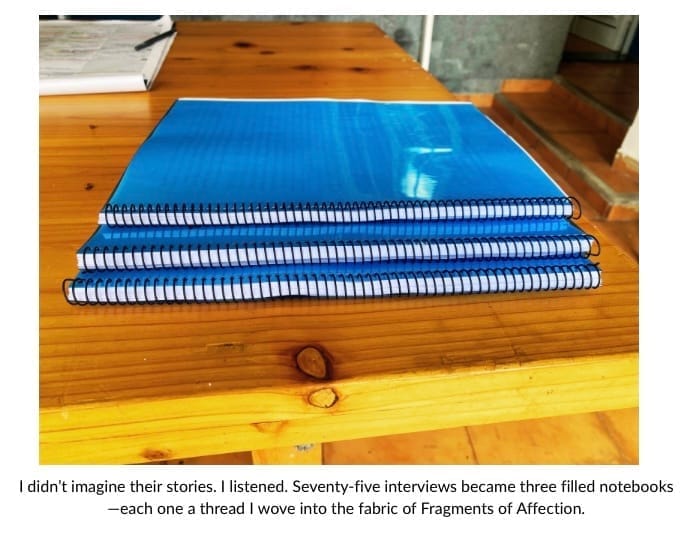

Writing a Novel Based on Dissociative Identity Disorder: A Creative Exploration of Identity
It didn’t start with a plot. It started with a voice.
Fractured. Persistent. Deeply human.
Then another. And another.
I didn’t set out to write about dissociative identity disorder (DID). I don’t have it. But I listened to the voices in my story the same way I’ve listened to over seventy-five people who live with DID every day. Their stories aren’t mine, but they were shared with me—graciously, vulnerably—and I carried them like threads in my pocket, weaving them into the fabric of Fragments of Affection.
This isn’t a how-to on writing thrillers or a guide on diagnoses. This is about emotional storytelling. It’s about writing to heal trauma—even if it’s not your own. It’s about listening closely enough to fictional characters that they become mirrors for something real.
What DID Is (In Real Terms)
Dissociative Identity Disorder isn’t a plot twist. It’s not a gimmick. It’s not what most movies want you to believe.
It’s a trauma-based condition. A way the brain protects itself by creating alternate identities—or “alters”—each one carrying pieces of memory, emotion, and pain that were too much for one self to hold alone.
These alters can have different names, voices, handwriting, even physical responses. In the media, DID is often turned into something violent or erratic. But the reality is far quieter—and far more courageous.
If you want to hear directly from people living with DID, I highly recommend watching systems like Multiplicity & Me or The Entropy System share their stories firsthand.

DID and Creativity: Writing Through Many Lenses
Writing this novel became an act of emotional translation. I wasn’t just telling a story—I was holding complexity and making it readable.
Each alter I created had their own tone, cadence, and emotional truth. Some scenes arrived in sharp fragments. Others flowed like grief.
The Challenges of Writing About DID (When It’s Not Your Lived Experience)
Writing about an experience you haven’t lived is a responsibility. One I take seriously. It meant pausing when I felt uncertain, choosing silence over assumption, and asking real people with DID to read my work and tell me the truth—even if that truth hurt.
The Strengths That Made This Story Possible
I wrote this book because the characters wouldn't let me go. Because they had something to say. Because the voices in my head weren’t mine—but they were mine to hold.
Storytelling for healing isn’t just about catharsis. It’s about truth. And when you write from a place of reverence—for the people whose stories inspired yours—you can create something that holds weight.

If You’re Writing About Trauma, Too…
Whether you’re writing fiction, poetry, memoir, or something in between—if your story is tangled up in someone else’s pain, tread carefully. But please, don’t stop.
Writing to heal trauma is messy. It’s slow. But it’s necessary.
Want to dive deeper?
Read my psychological thriller, Fragments of Affection
Learn more about DID and trauma healing
Explore my creative writing tools and downloads
Join my newsletter for behind-the-scenes content and updates

Danielle Blum is a psychological thriller author, travel curator, and creative powerhouse behind The Blum Creative. She writes bold, emotionally layered stories that explore identity, trauma, and truth—and helps others do the same through immersive travel, digital tools, and soulful storytelling.
+1 202 771 0221
Categories
Newsletter
Subscribe now to get daily updates.
Created with © systeme.io


